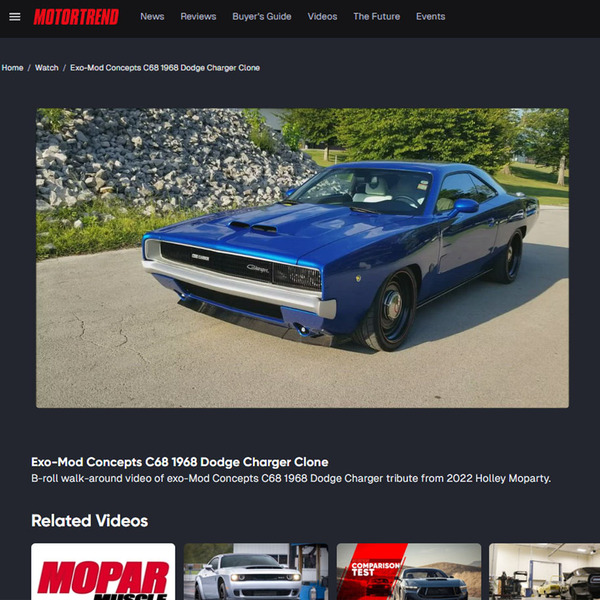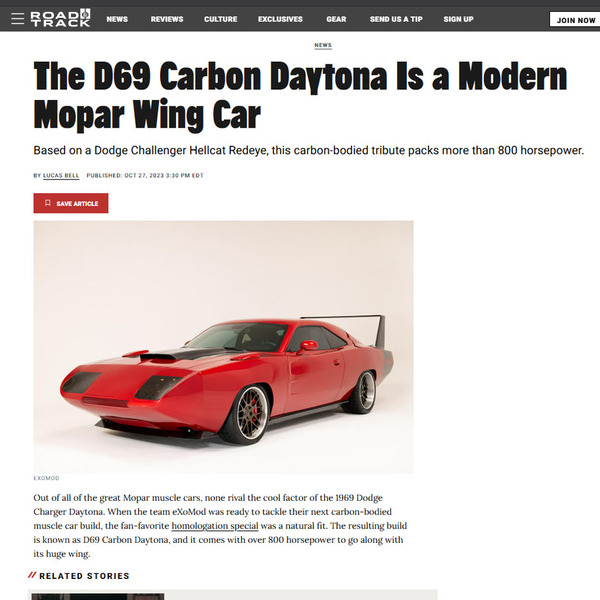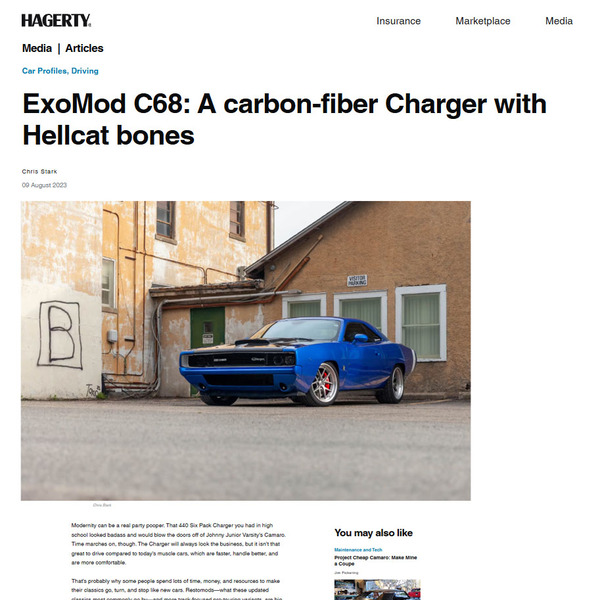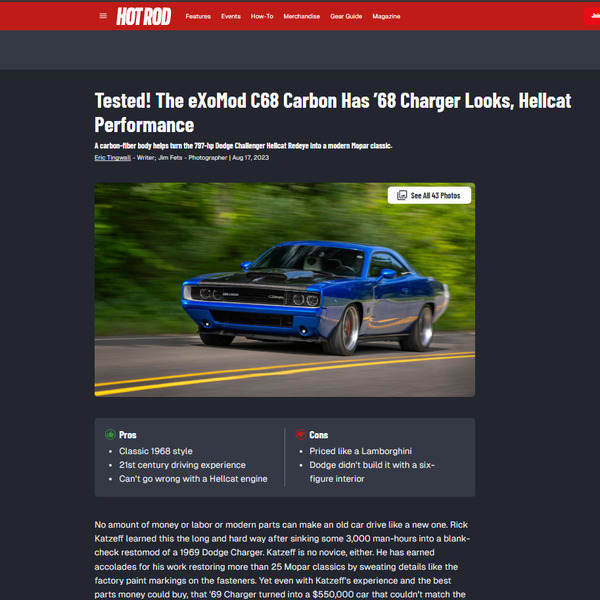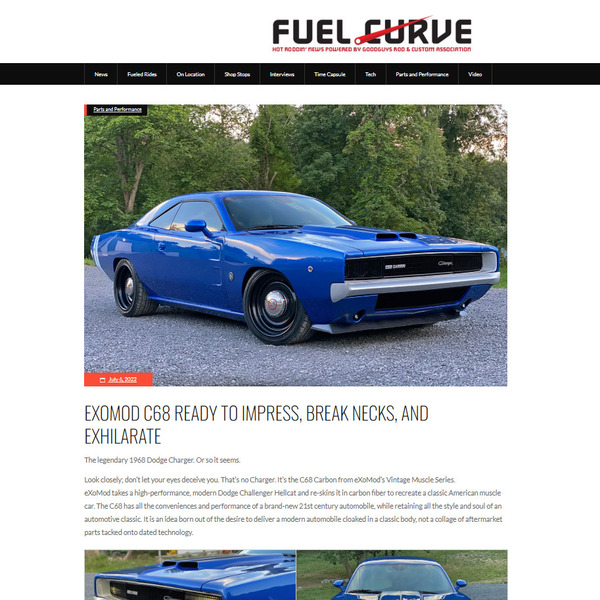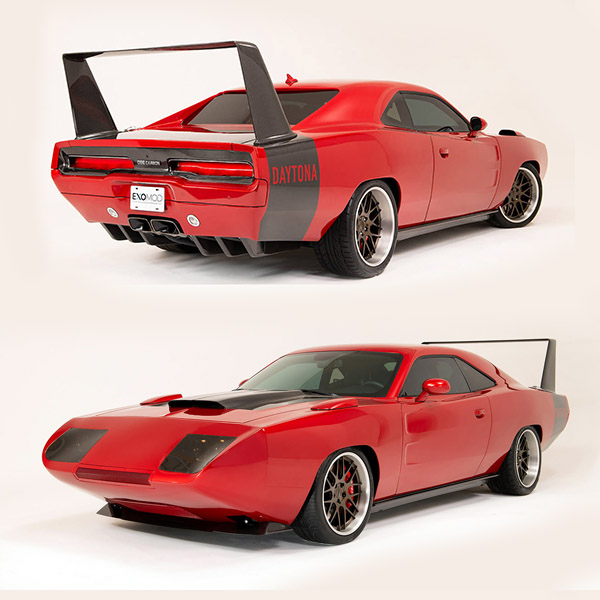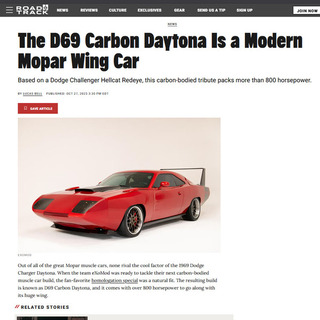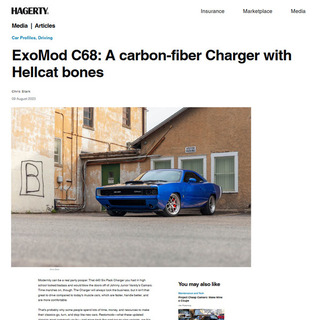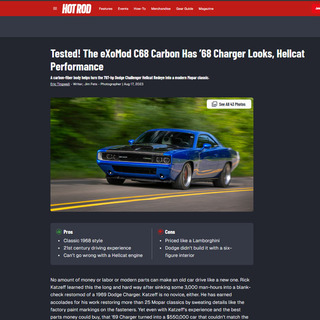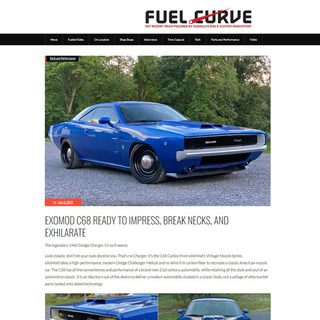
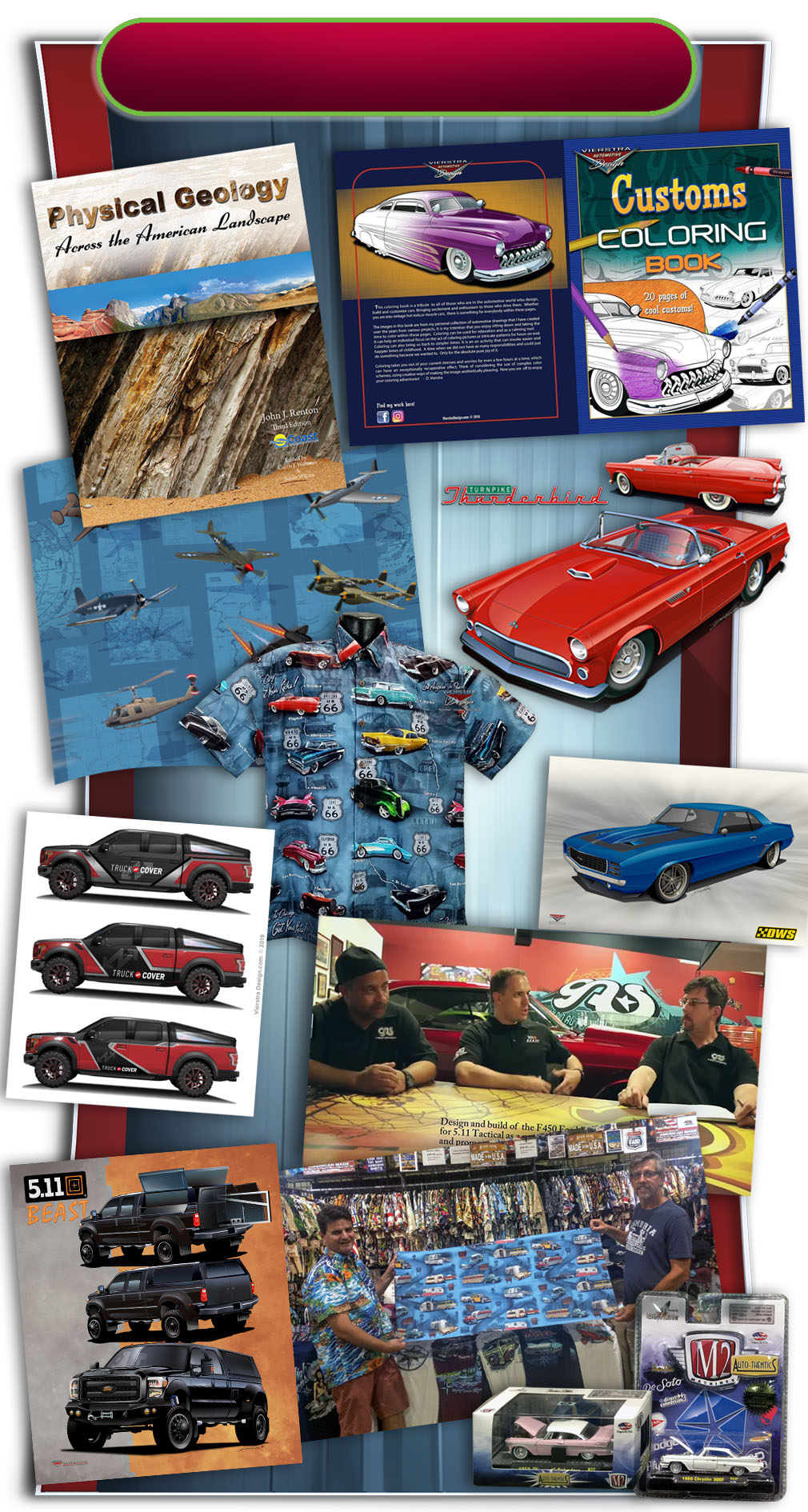
PROJECTS
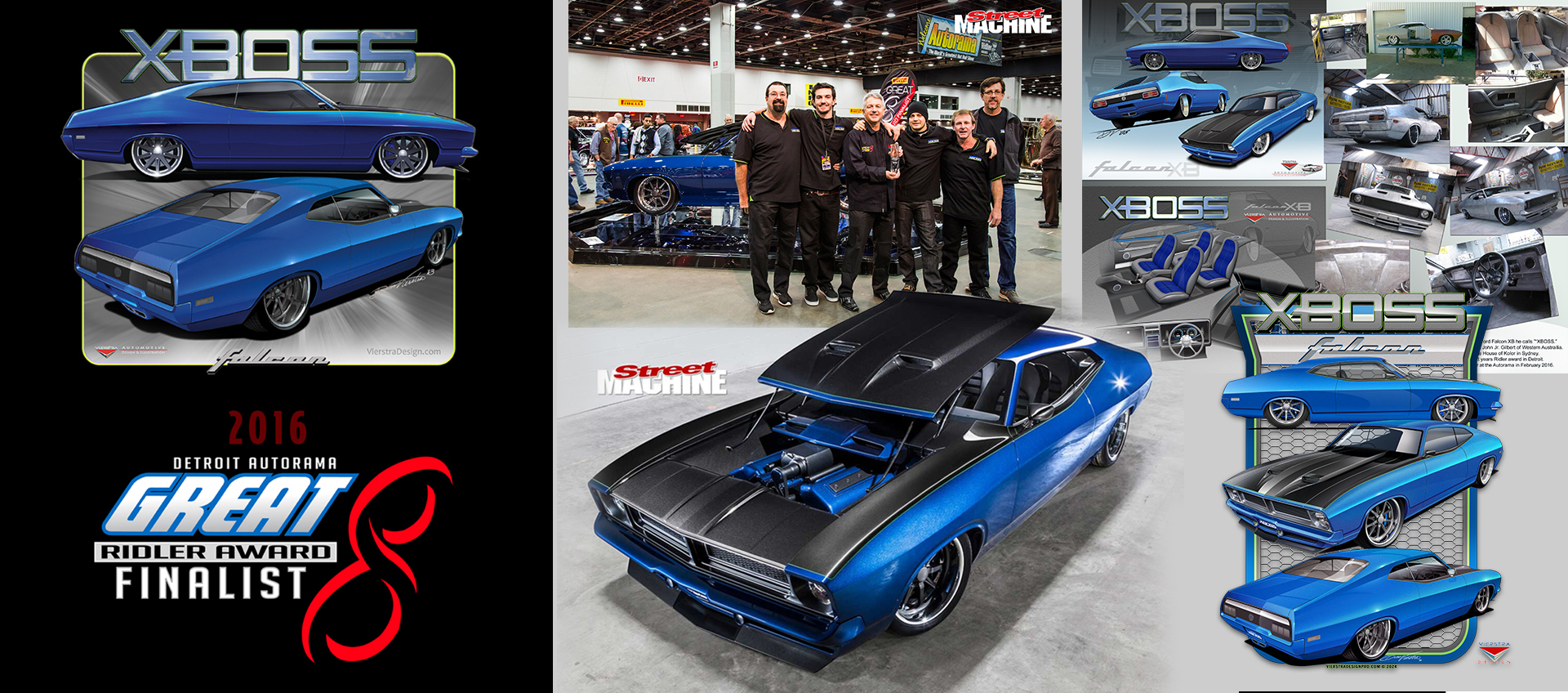
XBOSS
The XBOSS Saga: A Dream Carved in Steel, Soul, and So-Cal Spirit
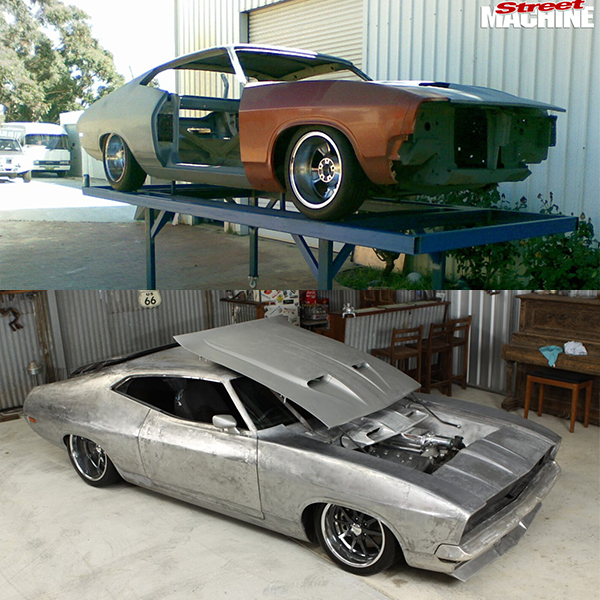
It all kicked off in 2008 with an email that roared into my inbox from Perth, Australia, like a V8 tearing down the open road. Chris Bitmead, a car enthusiast whose passion burned brighter than the So-Cal sun, had a vision wild enough to make any creative’s heart race: transform a bare 1976 Ford Falcon XB Coupe shell into a high-end custom beast powered by a snarling Ford BOSS 302 motor. He called it “XBOSS,” a name that carried the weight of ambition and growled with promise. Chris, alongside his wife, Colleen, had secured an XC Falcon shell but preferred the tougher, iconic XB look. When he sent me photos of the raw, unpainted shell and those gleaming wheels, I felt a jolt of excitement that rivaled the buzz of Orange County’s car scene. As a freelance designer from Southern California with 15 years of shaping ideas into reality, being chosen for this project, with the freedom to let my creativity run wild—was a dream gig. And then came the cherry on top: Chris tasked me with designing the XBOSS logo and rear Falcon badging, a nod to the Ford Mustang’s BOSS emblem but infused with a unique flair that screamed originality.
Chris didn’t just hand me a job; he handed me a toolkit for inspiration, a collaborative spark that resonated with my love for sharing ideas and mentoring others. A photo of the shell arrived, paired with online reference shots, a detailed build list, and best of all, a 1/24 scale diecast Falcon model. That little diecast became my North Star, revealing angles and possibilities I couldn’t have dreamed up otherwise. From my creative hub in So-Cal, where the coastal vibe fuels my work, I dove into the design process. I tweaked the front grille, sculpted a fibreglass bonnet with GT-inspired scoops, refined the spoiler, and crafted a custom roll pan, each change chiseling XBOSS into existence. The exterior emerged as a masterpiece: flush-mounted glass, a two-tone symphony of metallic blue and charcoal, sliced by a lime green pinstripe that popped like a neon heartbeat against the Pacific sunset. It was daring, and it was perfect.


Inside, I rendered an interior that married modern flair with the Falcon’s classic grit—sleek gauges, hand-stitched leather, modified Mercedes 500SL seats, and custom door panels that whispered sophistication. The engine bay? A shrine to the 5.4-liter Ford quad-cam V8, supercharged by Kenne Bell, backed by a C10 automatic transmission, and riding on Jaguar suspension. Every detail was a collaborative dance, reflecting my passion for learning and sharing processes with Chris and his crew, John Gilbert, Mark Allen, Jeff Allen, Travis Sparrow, and Brodie Mitchell. Their backyard shed in Perth became a forge of creativity, engineering, and workmanship, echoing the collaborative spirit I thrive on in So-Cal’s vibrant creative community.
Just as we were polishing the final touches, Chris dropped a bombshell: XBOSS was gunning for the Don Ridler Memorial Award, the Holy Grail of custom cars at the 2016 Detroit Autorama. The stakes were sky-high, Ridler contenders had to be built in secret and debuted at the show. We locked in the last edits, including the electric bonnet and boot mechanisms that showcased our engineering prowess, zipped our lips, and held our breath. When XBOSS rolled onto the Autorama floor, it was a sensation, earning a coveted spot in the Pirelli Great 8, the first Australian-built car to achieve this honor, and snagging the CASI Cup. The Yanks, some familiar with the XB from Mad Max, were floored, with TV networks swarming for interviews. Though it didn’t clinch the Ridler, XBOSS proved Australia could hang with the world’s best, a moment that felt as triumphant as mentoring a protégé to success.

The Journey Back to Australia and a Trail of Trophies
After its Detroit triumph in 2016, XBOSS returned to Australia, where its legend only grew. The car embarked on a victory lap that would make any car enthusiast’s heart race. In 2016, it clinched the Street Machine of the Year title and the MotorEx Grand Master award, cementing its status as a national icon. In 2017, XBOSS dominated the elite judging at Street Machine Summernats, sweeping awards including Top Judged Elite, a feat described as unprecedented in Australian show car history. It also wowed crowds at Motorvation 32 in Perth in January 2018, where it was driven publicly for the first time at a show, thrilling spectators with its raw power and flawless design. Chris shared the wheel with mates at the Hardtop Anniversary at Mount Panorama, Bathurst, in 2017, cruising the iconic track despite a minor battery hiccup that required a five-hour alternator troubleshoot, a testament to the team’s grit. The car’s media buzz was electric, with a Today Tonight feature racking up 3.3 million Facebook views, a viral nod to its universal appeal.
Just as we were polishing the final touches, Chris dropped a bombshell: XBOSS was gunning for the Don Ridler Memorial Award, the Holy Grail of custom cars at the 2016 Detroit Autorama. The stakes were sky-high, Ridler contenders had to be built in secret and debuted at the show. We locked in the last edits, including the electric bonnet and boot mechanisms that showcased our engineering prowess, zipped our lips, and held our breath. When XBOSS rolled onto the Autorama floor, it was a sensation, earning a coveted spot in the Pirelli Great 8, the first Australian-built car to achieve this honor, and snagging the CASI Cup. The Yanks, some familiar with the XB from Mad Max, were floored, with TV networks swarming for interviews. Though it didn’t clinch the Ridler, XBOSS proved Australia could hang with the world’s best, a moment that felt as triumphant as mentoring a protégé to success.
From 2017 to 2018, XBOSS scooped up major awards at every eligible state indoor car show in Australia, a streak unmatched in the scene. Its meticulous craftsmanship down to the 1.5mm pinstripe snaking around the undercarriageand the mirror-smooth paint on the suspension arms, left judges and fans in awe. My logo and badging, glowing under the show lights, felt like a piece of my So-Cal-inspired creativity shining on a global stage. The car’s journey wasn’t just about trophies; it was about inspiring others, much like my own passion for mentoring. Chris himself noted at Motorvation that sharing XBOSS with the public allowed people to see the effort and detail up close, a sentiment that echoed my love for collaboration and idea-sharing.
Where XBOSS Roars Now

In November 2021, XBOSS made headlines again, fetching a jaw-dropping $860,100 at a Grays Australia unreserved auction, likely setting an Australian record for an elite show car. The auction, initially disrupted by technical issues, saw 102 additional bids in a reopened two-hour window, pushing the price far beyond the initial $464,900 bid. This sale underscored XBOSS’s enduring value and its place in automotive history. While its current whereabouts aren’t explicitly documented, the car’s legacy suggests it’s either in the hands of a passionate collector or still turning heads at select events, its metallic blue and lime green pinstripe gleaming under new skies. Given its street-legal status under Western Australia’s Individually Constructed Vehicle guidelines, XBOSS could still be cruising the open road, a rolling testament to creativity, engineering, and the collaborative spirit that brought it to life.
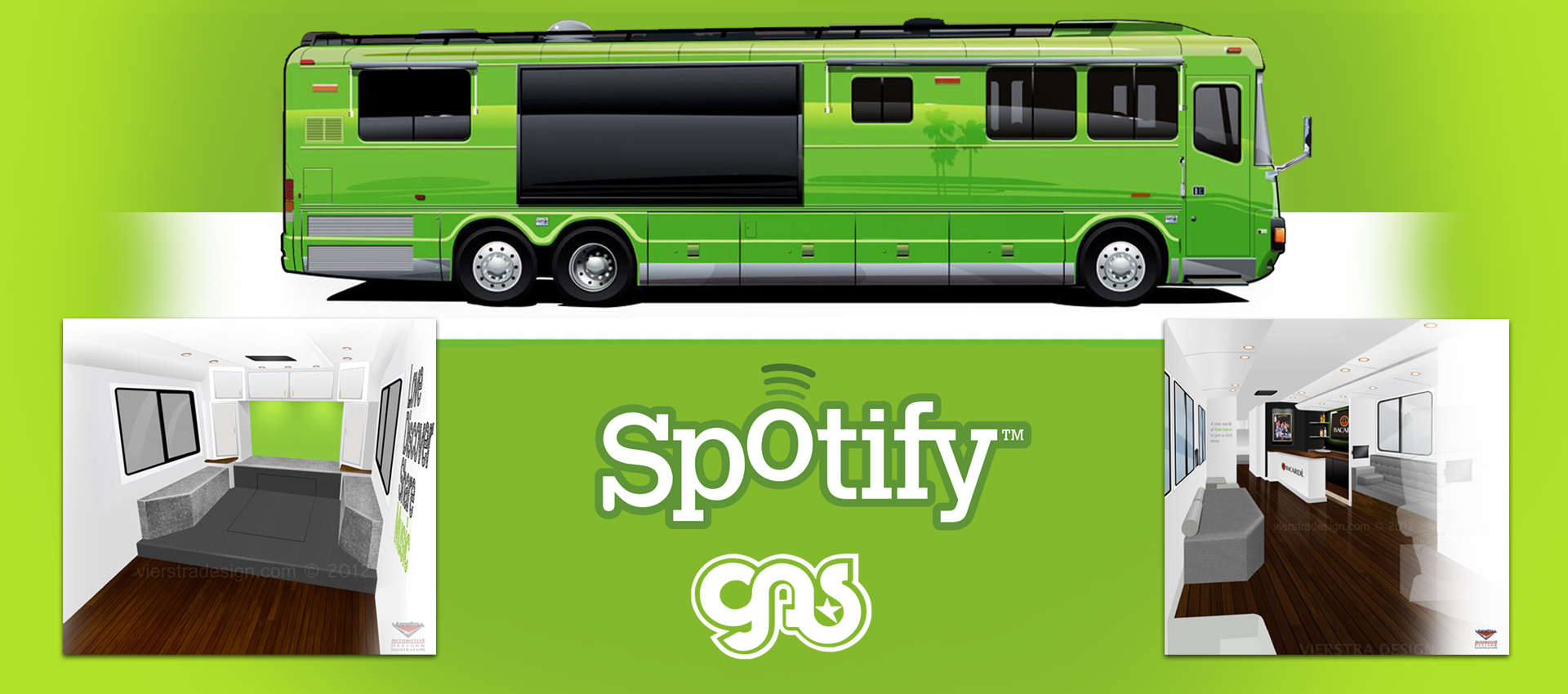
SPOTIFY
The Spotify Bus: A Rolling Symphony of Brand and Innovation
In 2012, Spotify was on the cusp of becoming a household name in the United States, its green and black logo already synonymous with the future of music streaming. With over 20 million active users globally by that year, Spotify was rapidly expanding, and the need for bold marketing strategies was paramount Spotify Company Info. To make a splash, they turned to Galpin Auto Sports, a legendary Los Angeles custom car shop known for transforming ordinary vehicles into extraordinary works of art. GAS, featured on MTV’s “Pimp My Ride” and known for high-profile builds like the “Knight Rider” Mustang, was the perfect partner for a project that required both innovation and flair.
When Gary Hull from GAS reached out to me, the excitement was palpable. This wasn’t just another car design; it was a chance to create a mobile masterpiece that would embody Spotify’s spirit and make a statement on the streets. The brief was clear: design a bus that would serve as a rolling billboard, blending functionality with branding in a way that would turn heads and spark conversations.
The Design Process: Crafting a Mobile Experience

I began with the exterior, where Spotify’s signature green and black colors took center stage. The design featured a large, built-in screen on the side of the bus, with projected lighting that prominently displayed the Spotify logo, a glowing beacon of the brand’s digital prowess. This wasn’t just a static advertisement; it was a dynamic, eye-catching feature that would light up the night and command attention during the day. The challenge was to integrate the screen seamlessly into the bus’s design, ensuring it felt like an organic part of the vehicle rather than an afterthought. After several iterations, I landed on a sleek, modern look that balanced the bus’s practicality with Spotify’s cutting-edge identity.
Inside, the vision was to create a sanctuary of simplicity and functionality. I created a top-down blueprint-style layout, meticulously detailing every compartment to ensure the space was both practical and inviting. The interior was designed with a minimalist aesthetic, clean white walls and ceilings contrasted beautifully with gray tweed accent fabrics, creating a modern, airy feel that was both sophisticated and approachable. This minimalist approach mirrored Spotify’s clean, user-friendly interface, making the bus feel like a natural extension of the brand.
Spotify’s request for additional renderings opened up new possibilities. I added views from the entrance and the rear room, incorporating a bar with seating areas where guests could relax and enjoy music on handheld devices preloaded with Spotify. These devices weren’t just for show; they were a nod to Spotify’s core mission of making music accessible anytime, anywhere. The bar area also featured prominent Bacardi signage, a clever touch that highlighted the partnership between the two brands and added a layer of exclusivity to the design. The rear compartment was transformed into an entertainment hub, complete with an integrated TV system for showcasing music videos or live performances, ensuring the bus could host events or provide a space for relaxation during long journeys.
Challenges and Creative Decisions: Balancing Form and Function
Designing the Spotify Bus wasn’t without its challenges. One of the trickiest aspects was balancing Spotify’s branding with the bus’s functionality. The large screen, while visually striking, had to be durable enough to withstand the rigors of the road. I worked closely with Gary Hull and the GAS team to ensure that the design was not only aesthetically pleasing but also feasible for construction. This involved multiple revisions, from adjusting the screen’s size to refining the lighting effects to ensure they were visible in various lighting conditions.
Another challenge was creating an interior that felt both luxurious and practical. The minimalist design was intentional, reflecting Spotify’s clean, user-friendly interface, but it also had to accommodate the needs of a promotional vehicle. The bar area, for instance, had to be functional yet sleek, with enough space for guests to mingle while still maintaining the bus’s overall flow. The gray tweed accents were a deliberate choice, adding a touch of warmth and texture to the otherwise stark white interior, ensuring it felt inviting for passengers and event attendees alike.

The Impact: A Rolling Statement
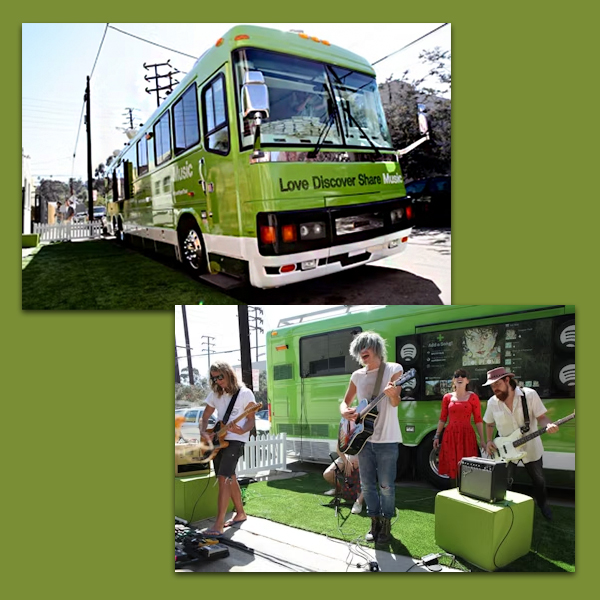
When the final renderings were complete, the Spotify Bus was more than just a design, it was a vision of how music and technology could come together in a tangible, exciting way. Though specific details on how the bus was used or received are not publicly documented, it’s easy to imagine it rolling through music festivals, city streets, and corporate events, drawing crowds and sparking conversations. The bus wasn’t just a promotional tool, it was a symbol of Spotify’s commitment to innovation and their ability to think outside the box.
For me, the Spotify Bus project was a unique opportunity to blend branding, functionality, and design into a cohesive vision. It was a chance to capture Spotify’s innovative spirit during a pivotal moment in its expansion, creating a vehicle that was as much a piece of art as it was a functional space. As I handed over the final renderings, I couldn’t help but feel a sense of pride, this wasn’t just a bus, it was a rolling symphony, a testament to the power of music and the creativity that drives it.
Comparative Analysis and Legacy
The Spotify Bus, while not as widely documented as other GAS projects like the “Knight Rider” Mustang or the “Mystery Machine” bus, stands as a lesser-known but significant example of GAS’s ability to create promotional vehicles that resonate with brands and audiences. The project’s focus on blending music and mobility aligns with GAS’s history of innovative builds, such as their work on TV and film vehicles, as noted in various sources . Though specific magazine features or awards for the Spotify Bus are not found, its design process highlights the intersection of automotive customization and digital branding, a niche that continues to grow in the marketing world.
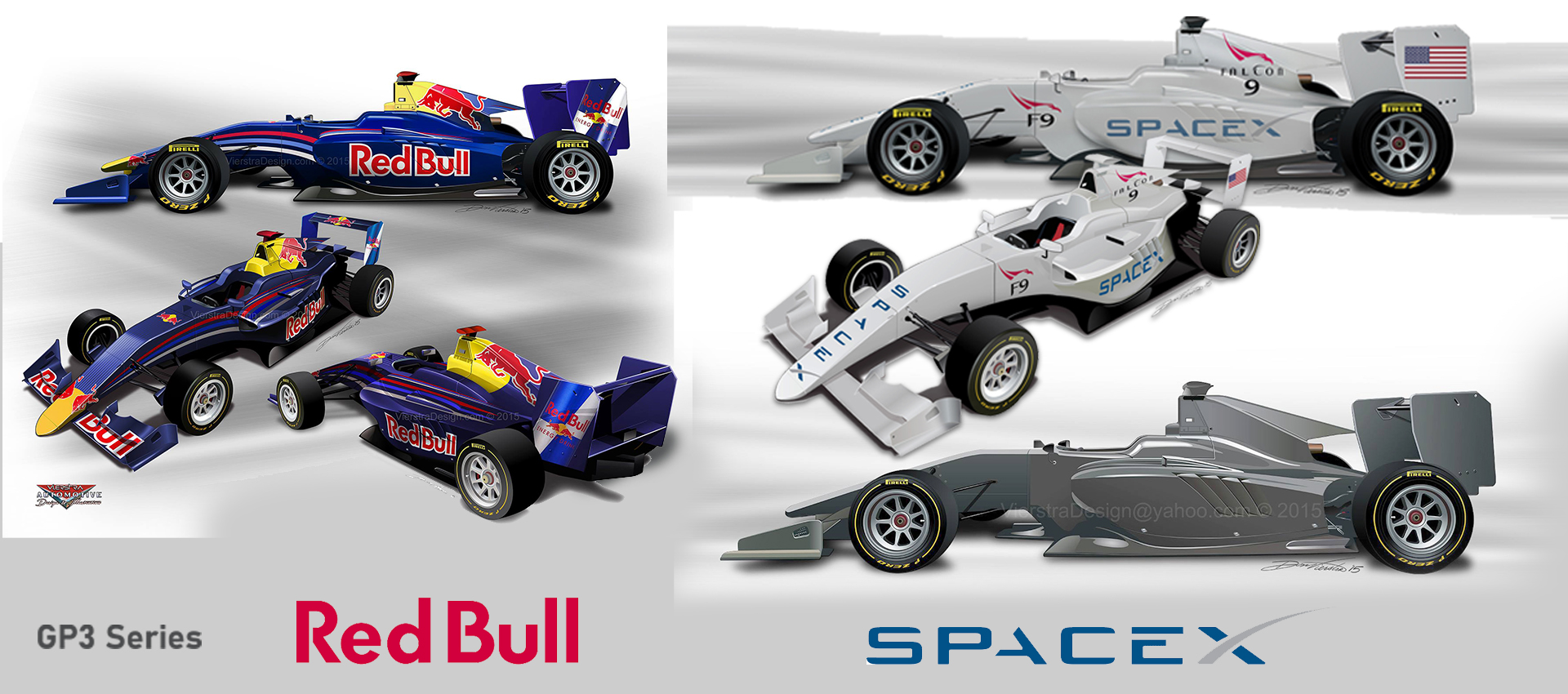
REDBULL / SPACEX
Anatoly Pogorelov: The Chess Prodigy Turned Formula 3 Fireball
Anatoly, originally hailing from Krasnoyarsk, Russia, didn’t just move to the U.S. at ten—he brought with him a competitive spark that could light up a drag strip. Before he was burning rubber, he was checkmating opponents as a kid, racking up chess championships with his dad and grandpa as his daily sparring partners. That strategic brain, honed over countless knight-and-bishop battles, fueled his dominance in Formula 3, where he was gunning for a Formula 1 seat like a missile locked on target. And get this: while carving up the track, he’s also been a big shot in the IT industry, proving he’s got the smarts to match his speed. His love for fast cars, hard work, and winning wasn’t just his vibe, it was his lifestyle.
Anatoly’s not just racing for glory; he’s got a savvy side, too. He snagged a partnership with My Racing Career (MRC), a racing management game, back in 2016, plastering their logo on his race suit and car during a Formula 3 event at Sonoma Raceway. That’s right—his car was a rolling billboard for MRC, giving him extra cred as he tore through turns at Sonoma. Photos from the Jim Russell F3 Race Series show him slaying corners like a pro, with shots of him exiting turns 2, 6, and 9a, looking every bit the future F1 star.


My role in his saga? Anatoly emailed me after spotting my portfolio online. He needed designs to woo heavyweights like Red Bull and SpaceX for sponsorship. I delivered, whipping up three view mock-ups of a Formula 3 car using Adobe Illustrator and polishing them in Photoshop. Diving into Red Bull’s branding guidelines, I crafted a design that screamed their iconic energy—bold logos, vibrant colors, the whole deal. For SpaceX, I mirrored that precision, ensuring their futuristic vibe showed through. My work wasn’t just art, it was a strategic play to help Anatoly lock in those big-name sponsors, blending my So-Cal creative flair with his high-speed hustle.
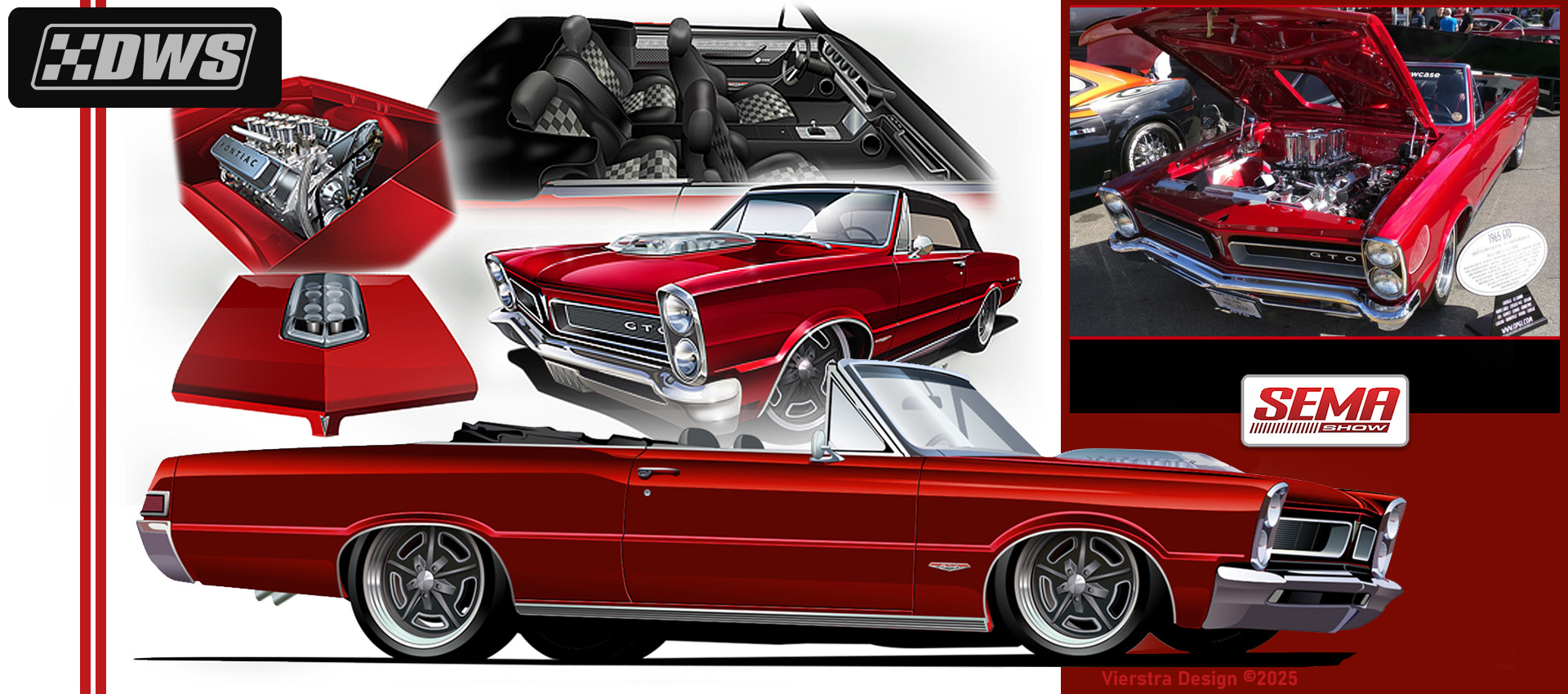
DWS Classics'
1965 Pontiac GTO Convertible Resto-Mod
The story begins with a 1965 Pontiac GTO Convertible, a car that had already etched its name in automotive lore. Originally owned by a college student who kept it for over 40 years, this GTO waited for the perfect moment to be reborn. The Pontiac GTO, credited with popularizing the muscle car segment in the 1960s, was known for its blistering performance. Car Life magazine tested a 1965 GTO with Tri-Power, recording a 0-60 mph time of 5.8 seconds and a quarter-mile time of 14.5 seconds at 100 mph, with a top speed of 114 mph at 6,000 rpm redline . This historical context underscores the car’s legacy, setting the stage for its transformation.
That moment arrived when Darin Smith, the owner of DWS Classics based in Huntington Beach, CA, approached Vierstra Design to collaborate on a resto-mod build. Sitting down with Darin, the vision was clear: a stunning blend of classic style and modern performance, turning a stock vehicle in need of restoration into a show-stopping masterpiece. The project, detailed on the CarBuff Network , aimed to honor the GTO’s heritage while pushing the boundaries of what a classic could be.
The Resto-Mod Transformation: Engineering Excellence
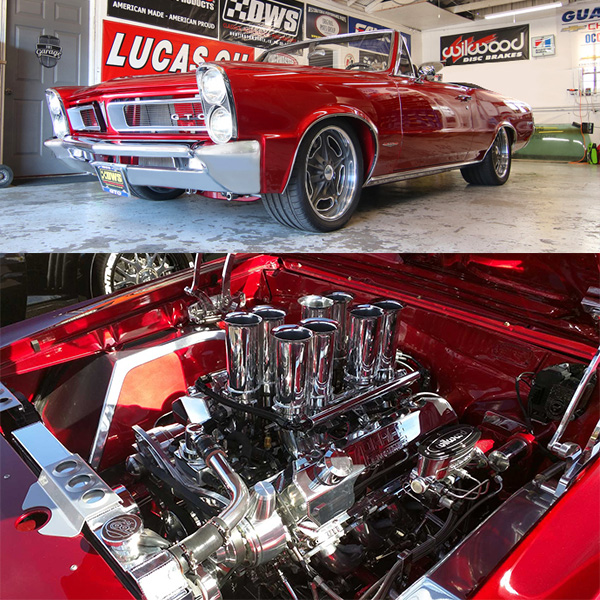
The transformation began with a complete overhaul of the chassis and drivetrain, elevating the GTO’s performance far beyond its original capabilities. The original frame was replaced with an Art Morrison chassis, a modern engineering marvel known for its rigidity and handling improvements. The front suspension was upgraded with Detroit Speed tubular components, and a Strange Independent Rear with 4.11 gears and Posi ensured precise power delivery to the ground. Stopping power was enhanced with Wilwood 6-piston brakes, a system capable of hauling this high-performance machine down from speed with authority.
Under the hood, the heart of the beast was a Dart 565 CI aluminum big block engine, polished to perfection and tuned to deliver a staggering 800 horsepower—far surpassing the original GTO’s output. Paired with a TCI 4L80e 6-speed auto transmission, this powertrain offered smooth and reliable shifting, ideal for a car designed to dominate both the street and the show floor. The drivetrain featured Strange Engineering’s axle/CV shaft and differential, mounted on Budnik 20” wheels wrapped in Falken tires, ensuring durability and style.
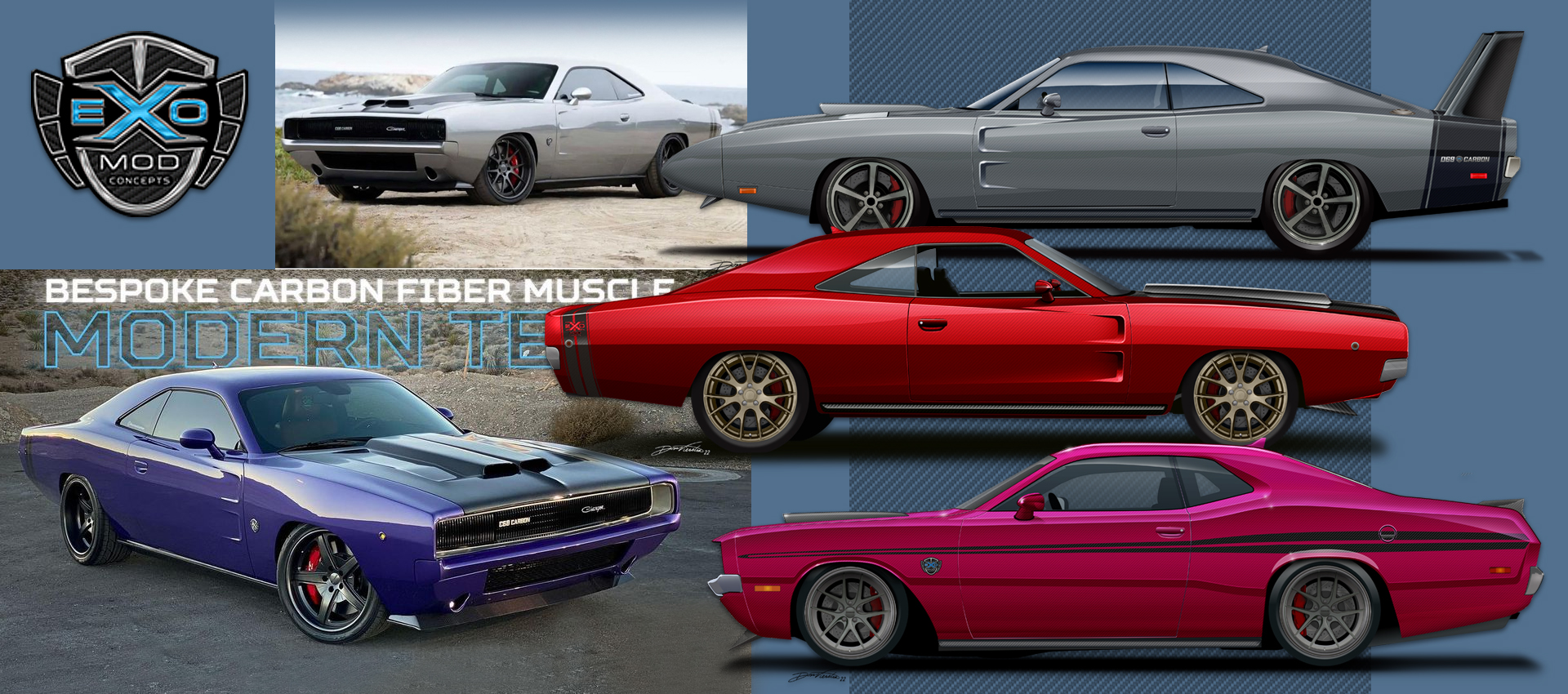
EXOMOD
The EXOMOD Concept: Carbon Fiber Meets Hellcat Power

At the core of EXOMOD lies a revolutionary approach: custom-built carbon fiber bodies fitted onto the SRT Dodge Hellcat powertrain. This design delivers a lightweight, high-performance machine that looks like it just rolled out of the 1960s but drives like it’s from the future. The carbon fiber bodies reduce weight for enhanced performance while enhancing the car’s sleek design. When painted, the carbon fiber is subtly concealed, allowing the overall aesthetic to take center stage, with subtle reveals offering a glimpse of the craftsmanship beneath—a hidden gem for enthusiasts.
My role in EXOMOD’s journey involved creating visual representations for key models, each a labor of love that balanced nostalgia with innovation. The process began with the C-68, a reimagined 1968 Dodge Charger based on a modern Dodge Charger body and drivetrain. I crafted front and side view renderings, experimenting with wheel styles and other design elements to capture the essence of the classic while integrating modern flair. This build, described as a “1,000 HP Carbon Fiber Monster” in Street Muscle Magazine (published May 15, 2023), showcases the raw power and innovative design that defines EXOMOD .
Design Process and Key Models: Crafting Icons

Next came the D-69, inspired by the 1969 Dodge Daytona. This design involved creating detailed front, side, and rear views, along with a top-down view of the hood. The hood featured dual scoops, influenced by other iconic models, resulting in a bold and modernized take on the Daytona. The D-71, based on the 1971 Dodge Demon, followed suit, each vehicle meticulously crafted starting in Adobe Illustrator for precise line work and finalized in Adobe Photoshop to add shading, highlights, and custom carbon fiber textures.
One standout build is the C68 Carbon “Rapper’s Delight,” featured in Classic Cars Journal (published October 21, 2024). This model was inspired by clear-coated carbon fiber seen on modern supercars like Hispano Suiza and Pagani, taking approximately 1,600 hours to construct, with weeks of overtime for its unique transparent Kandy carbon fiber finish . Rick Katzef’s quote, “Each one of those models usually takes approximately 1,600 hours to construct, but to create Rapper’s Delight, we put in weeks of overtime,” highlights the dedication behind these builds.
Recognition and Impact: Magazine Features and Awards
EXOMOD’s impact extends beyond the cars themselves, with widespread recognition in the automotive press. Magazine features have played a crucial role in showcasing their unique blend of old-school charm and modern muscle. Street Muscle Magazine not only featured the C68 but also highlighted another build, “ExoMod’s Black Velvet Is A Horsepower-Filled Dark Delight” (published July 26, 2023), describing it as a lightweight, over-700-horsepower retromod . Classic Cars Journal’s feature on “Rapper’s Delight” further cemented EXOMOD’s status as a leader in retromod innovation.
The EXOMOD registry page notes that several builds have been “Multiple Magazine Feature cars,” with specific mentions of awards like the GoodGuys Award, recognizing their excellence in craftsmanship and design . This recognition extends to the modeling community, where enthusiasts have created detailed scale replicas, as seen in discussions on Model Cars Magazine Forum about an EXOMOD C68 carbon charger model (published April 28, 2023)

EXOMOD's Legacy
EXOMOD’s journey, from Katzef’s initial vision to its current status as a retromod leader, highlights its cultural and technical impact. The company’s builds, such as the C68 sold at auction on Bring a Trailer for $271,555 on January 30, 2025, demonstrate their market value and appeal . This sale, part of the Last Call edition, underscores the high demand for EXOMOD’s innovative designs, with features like HID Air Catcher headlamps and Forgeline OE1 20” wheels enhancing their allure.
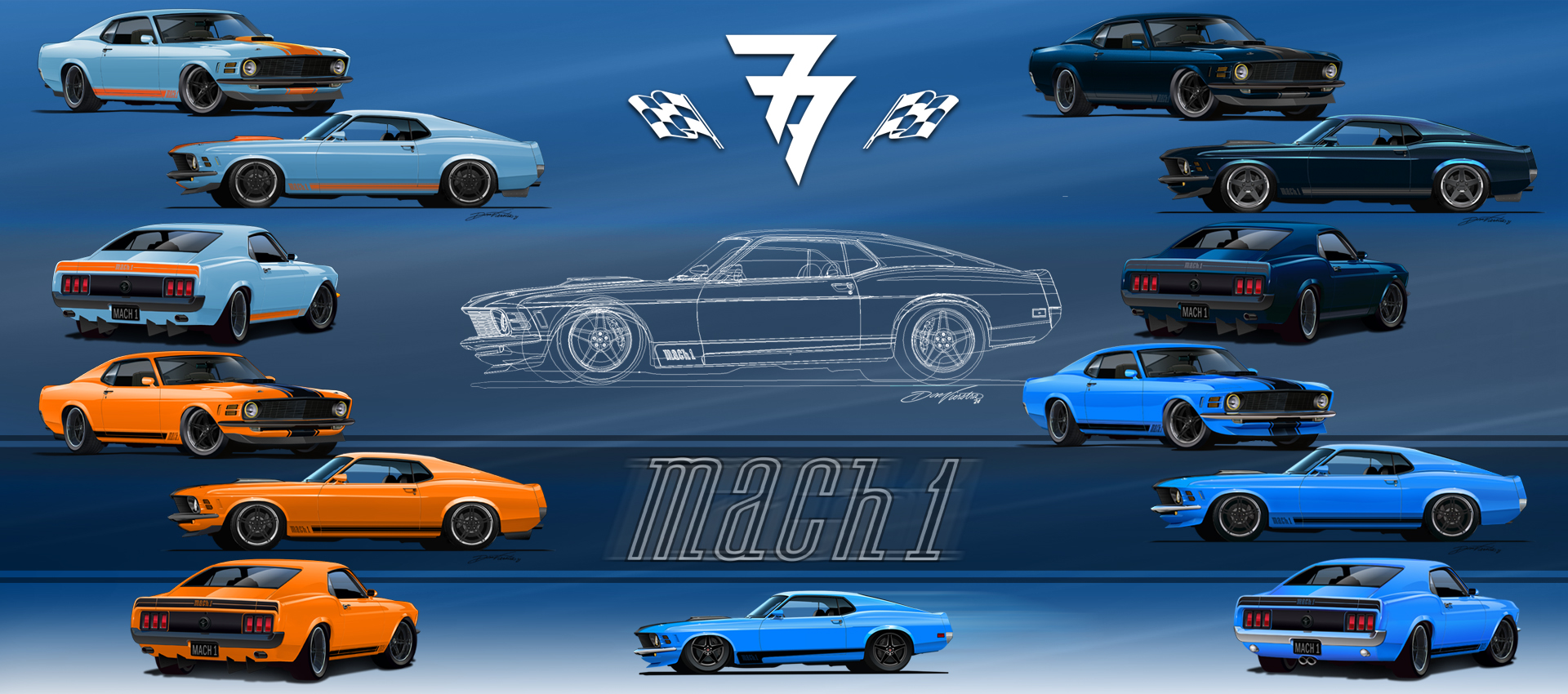
Fast Freddies
The Legend of the 1970 Mach 1:A Father-Son Dream Realized
The story of the 1970 Mustang Mach 1 build by Fast Freddies Rod Shop is a thrilling tale of passion, craftsmanship, and family legacy, set against the backdrop of Eau Claire, Wisconsin, where winters are long and the love for cars burns hot. This project, commissioned for a father-and-son duo, isn’t just another restoration; it’s a chance to breathe new life into a true automotive icon and forge a bond that transcends generations.
Background and Vision: The Iconic Mach 1
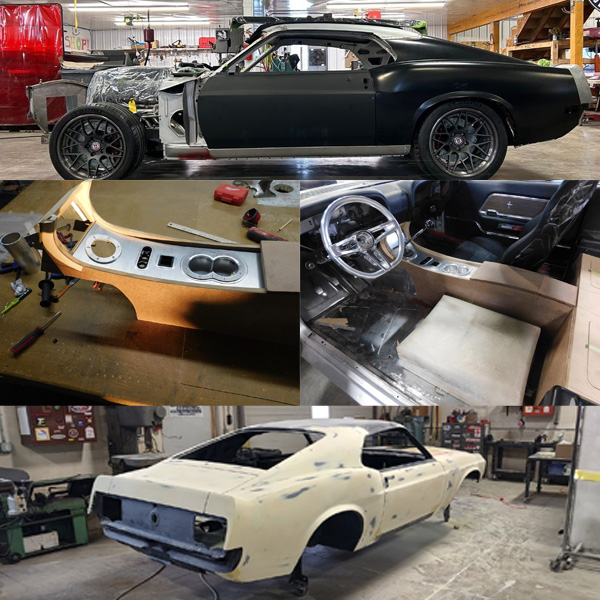
The Ford Mustang Mach 1, introduced in 1969, was Ford’s bold response to the pony car wars, a performance package that combined aggressive styling with raw power. By 1970, it had evolved into a legend, with over 40,000 units sold, featuring sleek lines, recessed taillights on a black honeycomb panel, and engine options like the 351 Cleveland V8, pushing up to 300 horsepower . Its cultural impact is undeniable, appearing in films like Bullitt and setting speed records at Bonneville, making it a dream car for enthusiasts. This car isn’t just metal and chrome; it’s a symbol of an era when horsepower ruled and freedom was just a quarter-mile away.
Fast Freddies Rod Shop, based in Eau Claire, has built a reputation for transforming vintage cars into modern marvels. Their website showcases a gallery of projects, from muscle cars to hot rods, with a focus on custom builds that blend nostalgia with innovation . Known for their meticulous attention to detail, they’ve been featured in automotive circles, with a 2007 article in Hot Rod Hotline describing their 9,000 sq ft shop buzzing with grinders and welders, a “visual overload” of projects including a 426 Hemi engine . This shop, led by Freddie Kappus, is where dreams meet steel, and where this father-son duo brought their Mach 1 for a transformation.
The Build Process: Crafting a Beast
When the father and son delivered their 1970 Mach 1, they had a vision: to take this classic beauty and turn it into a beast that would turn heads and drop jaws. The car, already a gem, was about to get a serious upgrade, a rebirth that would honor its heritage while propelling it into the future. I was brought in to help with creative renderings, collaborating closely with Freddie and his team to dial in the details. At the core of this transformation was a Fast Track Roadster Shop chassis, featuring independent rear suspension for improved handling and a smoother ride. Under the hood, a 5.2 Aluminator engine promised to deliver heart-pounding power, paired with a T56 transmission for precise gear changes. This setup, detailed in Roadster Shop’s product page for 1964-70 Mustangs, ensures the driveline aligns with the factory tunnel, creating a firm, modern chassis system . It’s not just a restoration; it’s a reimagining, a way for the father and son to leave their mark on automotive history.
The design process was a collaborative effort, with the clients and Fast Freddies team envisioning a paint job that would make the car stand out. They settled on a sleek Grabber Blue with matte black accent stripes, a color scheme that echoes the Mach 1’s original boldness. To add to the aggressive look, 315 tires on HRE wheels were chosen, giving the car a wide, planted stance ready to devour the road. The grille lights were removed for a cleaner, more modern look, and matte black rear window louvers added a touch of mystery, enhancing its menacing profile.
Midway through the project, the team explored additional paint options, each promising to elevate the Mach 1’s presence. They considered the iconic Gulf Racing colors—Gulf Blue and Orange—which would have given the car a racing pedigree look, reminiscent of Le Mans legends. They also looked at Antimatter Blue from GM’s color palette, a rich, deep blue that would have made the car look like it was straight out of a sci-fi movie. Each option was debated, with renderings in Adobe Illustrator meticulously crafted to visualize the impact, but in the end, they stuck with Grabber Blue, knowing it was the perfect choice for this classic.

The Excitement Builds: A Showstopper in the Making
As the project neared completion, the excitement was palpable. At 75% done, the car was already shaping up to be an absolute showstopper. Freddie himself couldn’t contain his enthusiasm, proclaiming, “It’s gonna be one nasty ride!” Imagine the finished product: a 1970 Mach 1 Mustang, its Grabber Blue paint gleaming under the sun, the matte black stripes adding a touch of menace. The HRE wheels, wrapped in 315 tires, give it a wide, planted stance, ready to tear up the asphalt. The 5.2 Aluminator engine growls with power, waiting to be unleashed through the T56 transmission. Inside, the interior is a blend of classic and modern, with custom touches that reflect the father and son’s personal style, perhaps a nod to their shared history with the car.
This build isn’t just about the car; it’s about the story behind it. A father and son, sharing a passion for cars, coming together to create something extraordinary. It’s about the team at Fast Freddies, who pour their hearts and souls into every project, turning dreams into reality. And it’s about the 1970 Mach 1, a car that has captivated generations, now ready to roar into the future with a new generation at the wheel. The project, detailed on Fast Freddies’ website, invites enthusiasts to follow its progress, with step-by-step photos showcasing the transformation.
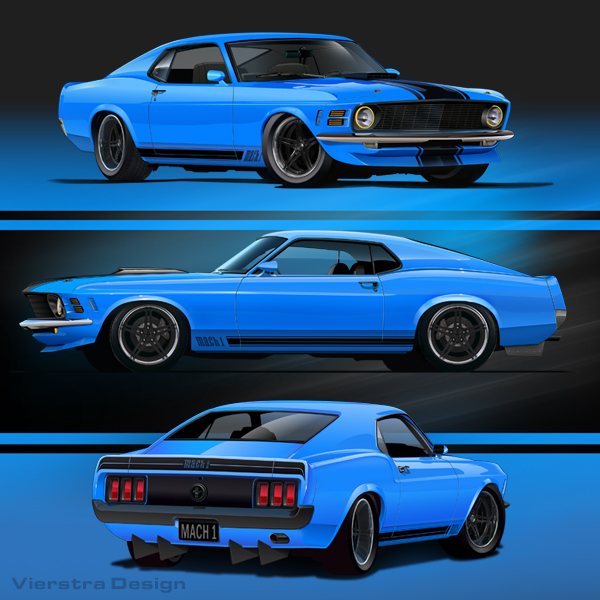
Fast Freddies Legacy
The 1970 Mach 1 build by Fast Freddies stands as a testament to the art of resto-modding, blending classic muscle car aesthetics with modern performance technology. Compared to other Mach 1 builds, like Bobby Curtis’s featured in Car Craft Magazine in 2007, this project emphasizes a father-son legacy, with a focus on collaboration and personal connection . While Curtis’s build focused on track performance, this one aims for a showstopper, with paint options like Gulf Racing colors adding a racing pedigree. The use of a 5.2 Aluminator engine and T56 transmission aligns with modern trends, ensuring this Mach 1 isn’t just a relic but a living, breathing piece of art.
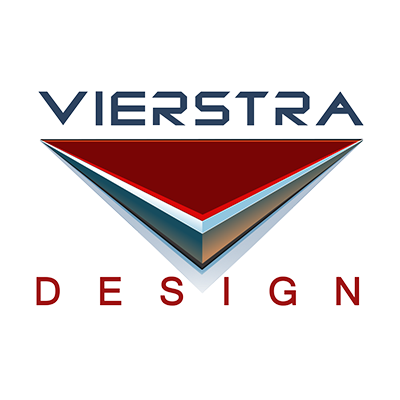
Automotive Design, Illustration and Graphic Design Services. I also offer prints of my work.
Contact
Don Vierstra
- Email: don@vierstradesign.com
- Phone: 714-209-6398
- Hours: Mon-Fri 9:00AM - 5:00PM
© 2025 All Rights Reserved.


